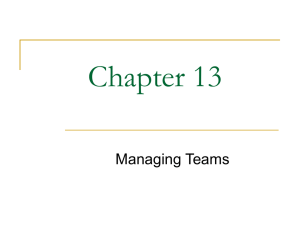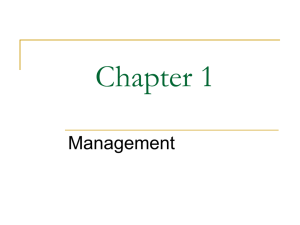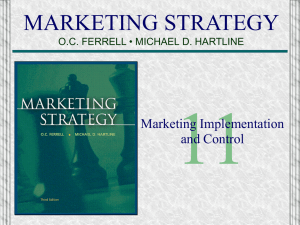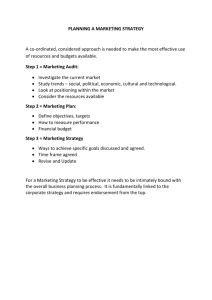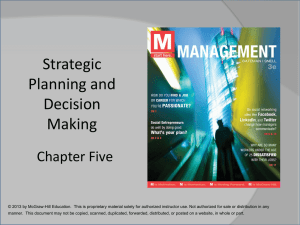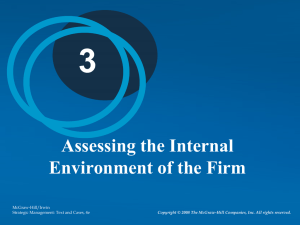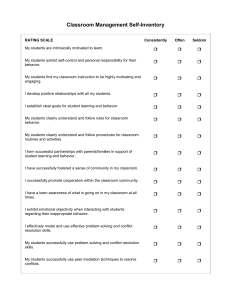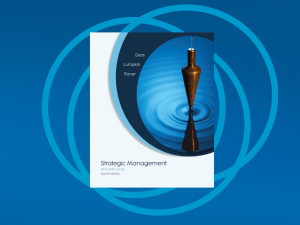The Manager's Job
advertisement
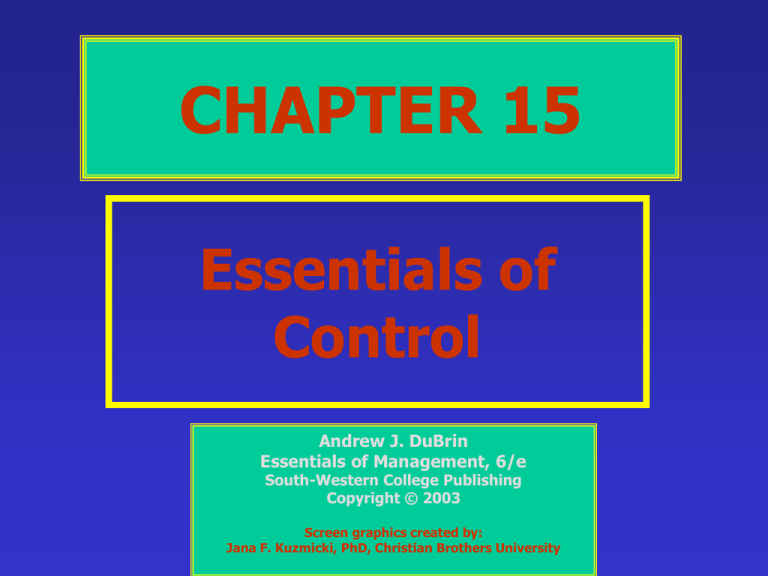
CHAPTER 15 Essentials of Control Andrew J. DuBrin Essentials of Management, 6/e South-Western College Publishing Copyright © 2003 Screen graphics created by: Jana F. Kuzmicki, PhD, Christian Brothers University After reading this chapter, you should be able to: PP T 1 Explain how controlling relates to the other management functions. 2 Understand the different types and strategies of control. 3 Describe the steps in the control process. 4 Explain the use of non-budgetary control techniques. 5 Summarize the various types of budgets, and the use of budgets and financial ratios for control. 6 Explain how managers and business owners manage cash flow and control costs, and use non-traditional measures of financial performance. 7 Outline the basics of an information system. 8 Specify several characteristics of effective controls. 15.1 The Links Between Controlling and the Other Management Functions Planning Organizing Leading PP T 15.2 Controlling Control Adapted from Exhibit 15.1 Steps in the Control Process Measure Actual Performance Set Standards PP T 15.3 Compare Actual Performance to Standard Do Nothing Solve the Problem Take Corrective Action if Necessary Revise the Standard Adapted from Exhibit 15.3 Qualitative Control Techniques Technique Audit PP T 15.4 Definition Examination of activities or records to verify their accuracy or effectiveness External audit Verification of financial records by external agency or individual Internal audit Verification of financial records by an internal group of personnel Management Use of auditing techniques to evaluate the overall effectiveness of management audit Personal observation Manager’s first-hand observation of how well plans are carried out Performance appraisal Formal method or system of measuring, evaluating, and reviewing employee performance Policy General guideline to follow in making decisions and taking action Adapted from Exhibit 15.5 Quantitative Control Techniques Technique PP T 15.5 Definition Gantt chart Chart depicting planned and actual progress of work on a project CPM/PERT Method of scheduling activities and events using time estimates Break-even analysis Ratio of fixed costs to price minus variable costs EconomicInventory level that minimizes ordering and carrying order quantity costs ABC analysis Method of assigning value to inventory; A items are worth more than B or C items Variance analysis Major control device in manufacturing Adapted from Exhibit 15.6 PP T Master budget Capitalexpenditure budget Human resources budget Materials purchase budget Types of Budgets 15.6 Cash budget Revenueand-expense budget Production budget PP T 15.7 Basic Elements of an Information System Analyze Information Requirements Develop an Information Base Design an Information Processing System Build Controls into the System Adapted from Exhibit 15.11 Characteristics of Effective Controls An effective control system is one that is: Accepted by employees, allowing them to have some control over the results being measured Relevant, timely, and meaningful Diagnostic by design Self-administering Consistent with other controls already in place Flexible, allowing for random variations Cost effective PP T 15.8
